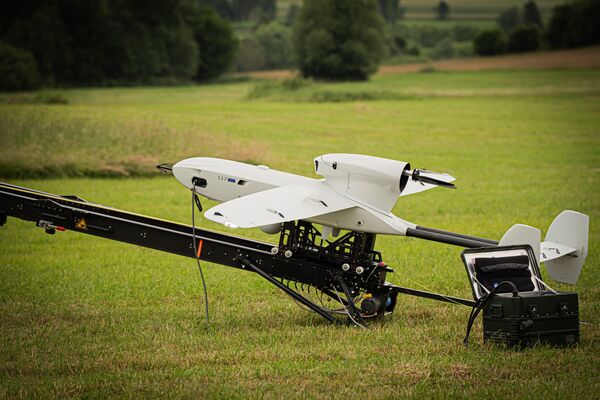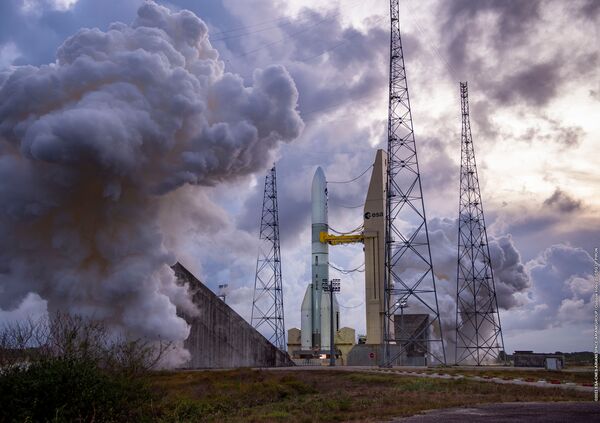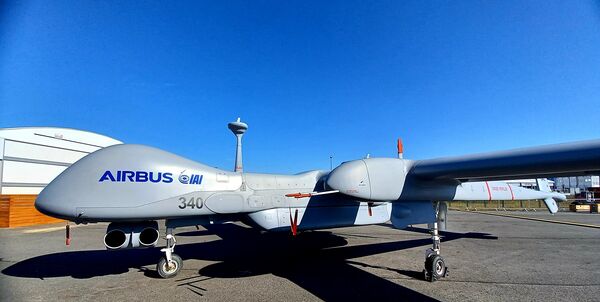- About
- Intara
- Capabilities
- Advisory
- Resources
- News
- Store
Germany funds LUNA NG UAS to replace KZO
27 September 2023
by Nicholas Fiorenza


The Bundestag budget committee on 20 September approved a contract amendment for the procurement of 12 LUNA NG UASs for the Bundeswehr. (Rheinmetall)
The budget committee of the Bundestag, Germany's parliament, on 20 September approved a contract amendment for the procurement of the Luftgestützte Unbemannte Nahaufklärungs-Ausstattung Next Generation (LUNA NG) medium-range unmanned aircraft system (UAS), which is designated by the Bundeswehr as Hocheffizientes Unbemanntes System zur abbildenden Aufklärung mittlerer Reichweite (HUSAR). The Bundeswehr is procuring 12 LUNA NG UASs and a training system to replace current LUNA and Kleinfluggerät für Zielortung (KZO) UASs.
A LUNA NG system consists of five unmanned aerial vehicles (UAVs), two ground control stations in protected containers, maintenance and repair equipment, two launchers, and two recovery systems.
The total contract value is EUR290.9 million (USD307.8 million), of which EUR238.6 remains to be funded by Germany's defence budget. The German Federal Ministry of Defence expects LUNA NG deliveries starting in 2025.
Germany's Federal Office of Bundeswehr Equipment, Information Technology and In-Service Support (BAAINBw) awarded EMT a EUR63 million framework contract for three LUNA NG systems and a training system, with an option for nine more UASs.
UK seeks mobile launcher for tactical UAVs, possibly for Ukraine
03 May 2024
by Gareth Jennings


The Ukrainian Ukrspecsystems PD-1 is likely the UAV that the UK is now looking to launch from the back of a civilian-type trailer or flatbed pickup truck. (Ukrspecsystems)
The UK Ministry of Defence (MoD) is seeking to acquire a commercial off-the-shelf (COTS) portable solution for the launching of tactical unmanned aerial vehicles (UAVs) of varying configurations.
A request for information (RFI) issued on 2 May calls for a system that can launch a UAV with a maximum take-off weight (MTOW) of 40 kg from a civilian-type trailer or flatbed pickup truck.
As noted in the RFI, the solution should launch the UAV at a velocity of 25 m/s and an MTOW of 75 kg at 35 m/s; have a launch g
Ariane 6 to launch second-gen Galileo satellites from 2026
02 May 2024
by Olivia Savage


The Ariane 6 launcher will launch the first batch of G2G satellites in 2026 and 2027. Pictured is a successful long-duration hot-fire test of the rocket on its launch pad at Europe's Spaceport in French Guiana in September 2023. The rocket is in its final stages of testing before its inaugural flight in June 2024. (Arianegroup)
The new Ariane 6 rocket will launch the initial batch of Galileo Second Generation (G2G) navigation satellites into orbit in 2026 and 2027, Arianespace announced on 29 April.
A total of four G2G satellites will be sent into orbit on Ariane 6 over two separate launches in 2026 and 2027. Airbus Defence and Space and Thales Alenia Space are each building six satellites, which together form the first fleet of G2G satellites, the company detailed.
The G2G satellites will use electric propulsion and host a more powerful navigation antenna as well as improved atomic clocks and fully digital payloads compared with the first-generation Galileo satellites. Each spacecraft will weigh 2,000 kg, orbiting at an altitude of 23,222 km (medium Earth orbit).
Luftwaffe declares Heron TP ready for Germany-based operations
02 May 2024
by Gareth Jennings


Seen at the ILA 2024 Berlin Air Show, the Heron TP has now been cleared for global operations by the Luftwaffe. (Janes/Gareth Jennings)
The Luftwaffe has declared its leased Israel Aerospace Industries (IAI) Heron TP unmanned aircraft systems (UASs) to be ready for Germany-based operations worldwide, with flights to commence in mid-May.
The Luftwaffe announced the milestone on 2 May, saying that the airworthiness certificate for the UAS had been signed by the German Federal Aviation Office in Cologne on the same day. “The approval of our new reconnaissance drone is valid worldwide,” the service said, adding that flights will soon commence out of Jagel (also known as Schleswig Air Base) in the far north of the country.
The announcement follows the Heron TP being awarded a type certificate by the German Military Aviation Authority in late 2022, at which time it was operated out of an undisclosed location in Israel.
The Heron TP is intended to bridge the gap between the retirement of the earlier Heron 1 UAS and the introduction of the new European medium-altitude long-endurance UAS known as Eurodrone, with Airbus Defence and Space operating five air vehicles out to 2027.
The budget committee of the Bundestag, Germany's parliament, on 20 September approved a contract ame...
Latest Podcasts
Using OSINT to support law enforcement
Ritu Gill, Intelligence Analyst, joins Harry and Sean to discuss the practical use of OSINT to support law enforcement. Ritu discusses it’s use in supporting risk assessments and classified or closed sources of intelligence. She also discusses t...
Listen nowJanes Case Studies
Using Janes Intara to build a common intelligence picture: Russian build up on the Ukrainian border
View Case StudyNews Categories
 Air Details
Air Details